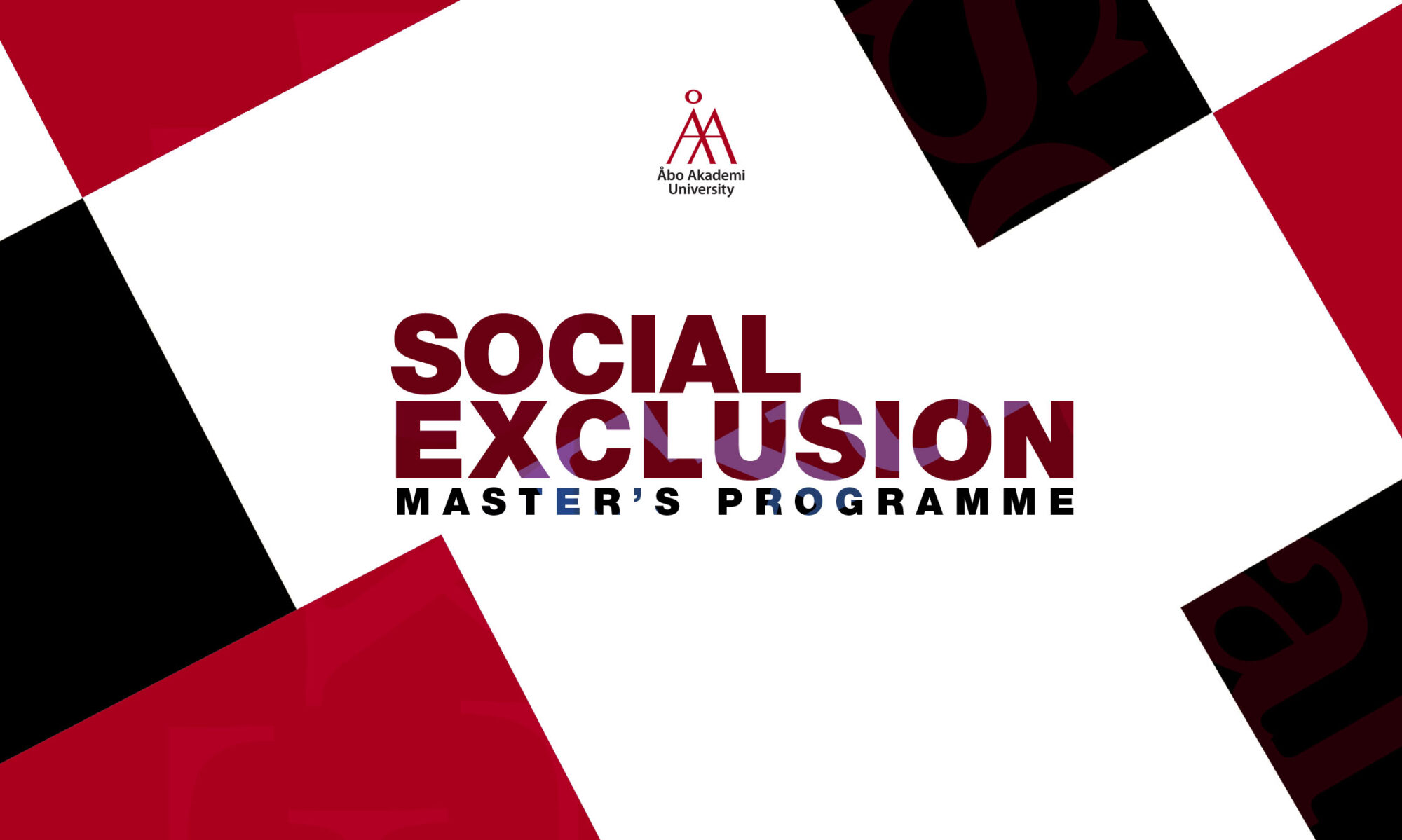WRITTEN BY Emilia Liesmäki
Non-affirmed relationships as a barrier to identity
This blog picks up where the previous blog left off, the importance of decision-making power, how much of it there is or has been, and its role in shaping the social identity of a minority group.
The Finnish state can be blamed because Sámi’s sense of sameness has not been able to develop in the same way as one of the self-governing provinces of the Åland Islands. This is the result of a long history. Suvi Keskinen has studied the involvement of the Finns and Finland in colonial/racial histories, which she notices to have been connected to the modern state- and nation-building processes, which created “Others” of the indigenous and minority populations, who were perceived as biologically and/or culturally inferior. Consequently, the colonization of Sámi lands, discourses of racial/cultural Otherness, and strong assimilation policies have been the silenced underside of the modernization process in Finland. [1] This blog focuses on the assumed consequences of cutting Sámi’s relationship to their lands not only concretely but also metaphorically and thus psychologically. Rauna Kuokkanen clarifies the worldview of the Sámi and explains that traditional Sami perception of the world postulates that the land is a physical and spiritual entity. More closely, as human survival depends on the balance and renewal of the land, the central principles in this understanding are sustainable use of and respect for the land and láhi, the earth’s abundance given to human beings if the relationships are well maintained. [2] In the year 2021, Finland has still not ratified the international ILO convention affirming the rights of the Sámi. The state’s actions irreversibly destroyed Sámi culture, and the state has still not been able to take responsibility for its human rights violations and other injustices. Sadly, the destructive spirit continues as Finland’s current Sámi policy systematically restricts the practice of traditional Sámi livelihoods, such as reindeer husbandry and fishing. [3] If we think of this from the geographical perspective to social exclusion, it is good to understand that even if Finland ratified ILO Convention 169, the state would not hand over land to the Sámi. However, the Sámi would have decision-making power, which would be reasonable. [4] Decision-making power could, however, contribute to the integrity of the Sámi social identity. Tiina Sanila-Aikio notes that the link with her people, culture, and language environment is practically being severed in their lifetime in Finland, which is by many standards one of the richest and best countries in the world. The Sámi live still today with a concern for the future. Moreover, in sparsely populated areas, the service system is also fragile, for example, related to mental health services. [5] It can be considered that the Sámi issues have reached an impasse. Until the ILO Convention is finally ratified, there will be a minor change in the autonomy of the Sámi and thus no development of social identity in the desired way. Toivanen quotes Bud Khleif to introduce the concept of “minoritised”, which he uses to illustrate that no one chooses to have less power. Here, nobody wants to belong to a minority if there are chances to have a position with more power. [6] This leads us to ask who is responsible for making someone a minority. In the case of the Sámi, The Finnish state has to ensure that its minorities have equal possibilities to strengthen their social identity.
Full sail ahead – social identity further strengthens the autonomy.
Åland tourism company sells Åland with the phrase “Experience the Sea like an Ålander, with a guide who knows the local waters and can tell you about fishing, the sea and its importance in Åland.”[7] BBC, in turn, describes the autonomy as follows “Surrounded by sea and forest, the 6,700 islands of Åland are idyllic, but Åland’s peacefulness runs deeper than its setting.” Both above establish the ground for the identity of the Ålanders, which is strongly linked to the land already by location. As noted in the first blog, the location and the successful autonomy model have made the Åland Islands an example of a potential solution to the conflict, but this has required the Ålanders to be flexible. In the BBC article, Ålandic perspectives were brought to the fore through interviews. In one of them, it is noticed that the Islanders must accept the duality of needing a measure of self-sufficiency while also being dependent on the lands surrounding them, which makes them more ready to accept compromise. In relation to the sea, another interview pointed out that there is found a certain amount of accountability in Åland that encourages positive social behavior, especially related to climate change and preserving nature. [8] Therefore, the Ålander’s deep relationship with the land further strengthens their social identity. They do not have to recall against the state for their rights related to the land, but, as a united group, focus on protecting the land and that it remains just as important for future generations. Also, the territory and the unique situation have brought prosperity to Åland. In the past, Åland was a poor region, but shipping has provided livelihood and economic benefits for its inhabitants. [9] In contrast to the Sámi, all the above has undoubtedly only strengthened the social identity of the Ålanders as a minority group. The shaping of Ålanders identity is described in Julia Koivus’s thesis that relates to an individual’s identity that is strongly related to the surrounding culture. Identity means identification with the surrounding culture and its traditions. The influence of the surrounding culture on the individual’s identity can be considered particularly strong in a small island community like Åland. The population is small, which means that people often know each other in Åland. The island community is close to the water, and nature is close to the sea. [10] If Åland were like any other Finnish province, it would not even have its hospital, just a health center. Åland has created its structures and solutions to maintain its level of service. [9]
The blog shows that functional autonomy in Åland has succeeded in uniting its inhabitants as a minority. Ålanders have sufficient decision-making power and as seen above, strong self-government is actually a significant part of their identity. On the other hand, it can be noted that the social identity of the Sámi will not be able to improve if they remain “minoritised”. Inequality will persist and a sense of belonging will not flourish as long as the Sámi are forced to remind of their rights. In analyzing autonomous regions, it is important to identify what kind of self-governance is at stake, given the multiple aspects of social exclusion.
For those more interested, I recommend reading Markku Suksi’s extensive research on autonomy arrangements in the world.
REFERENCES:
[1] Keskinen, S. (2019). Intra-Nordic Differences, Colonial/Racial Histories, and National Narratives: Rewriting Finnish History. Scandinavian studies, 91(12), 163-181.
[2] Kuokkanen, R. (2005). Láhi and Attáldat: The Philosophy of the Gift and Sami Education. The Australian Journal of Indigenous Education, 34, 20-32. doi:10.1017/S1326011100003938
[3] Mariya Riekkinen and Markku Suksi, “The Sámi Assembly in Finland”, Online Compendium Autonomy Arrangements in the World, November 2019, at www.worldautonomies.info.
[4] (8.2.2017.) Suomen on aika turvata saamelaisten oikeudet. Helsingin Sanomat.
[5] Leino, P. and Varis, N. (9.11.2019.) Miksi saamelaiset aina valittaa? Yle uutiset.
[6] Lyytinen, J. (23.6.2021.) Å luokan kysymys. Helsingin Sanomat.
[8] Gardiner, K. (29.6.2021.) Surrounded by sea and forest, the 6,700 islands of Åland are idyllic, but Åland’s peacefulness runs deeper than its setting. BBC.
[9] Aitomurto, T. (5.2.2019.) Suomalaiset tietävät liian vähän saamelaisista. Helsingin Sanomat.
[10] Koivu, J. (2014.) (Svensk är jag inte, finska kan jag inte tala – så låt mig vara ålänning : en enkätstudie om åländska ungdomars identitet. Kanditaatin tutkielma. Jyväskylän Yliopisto.

